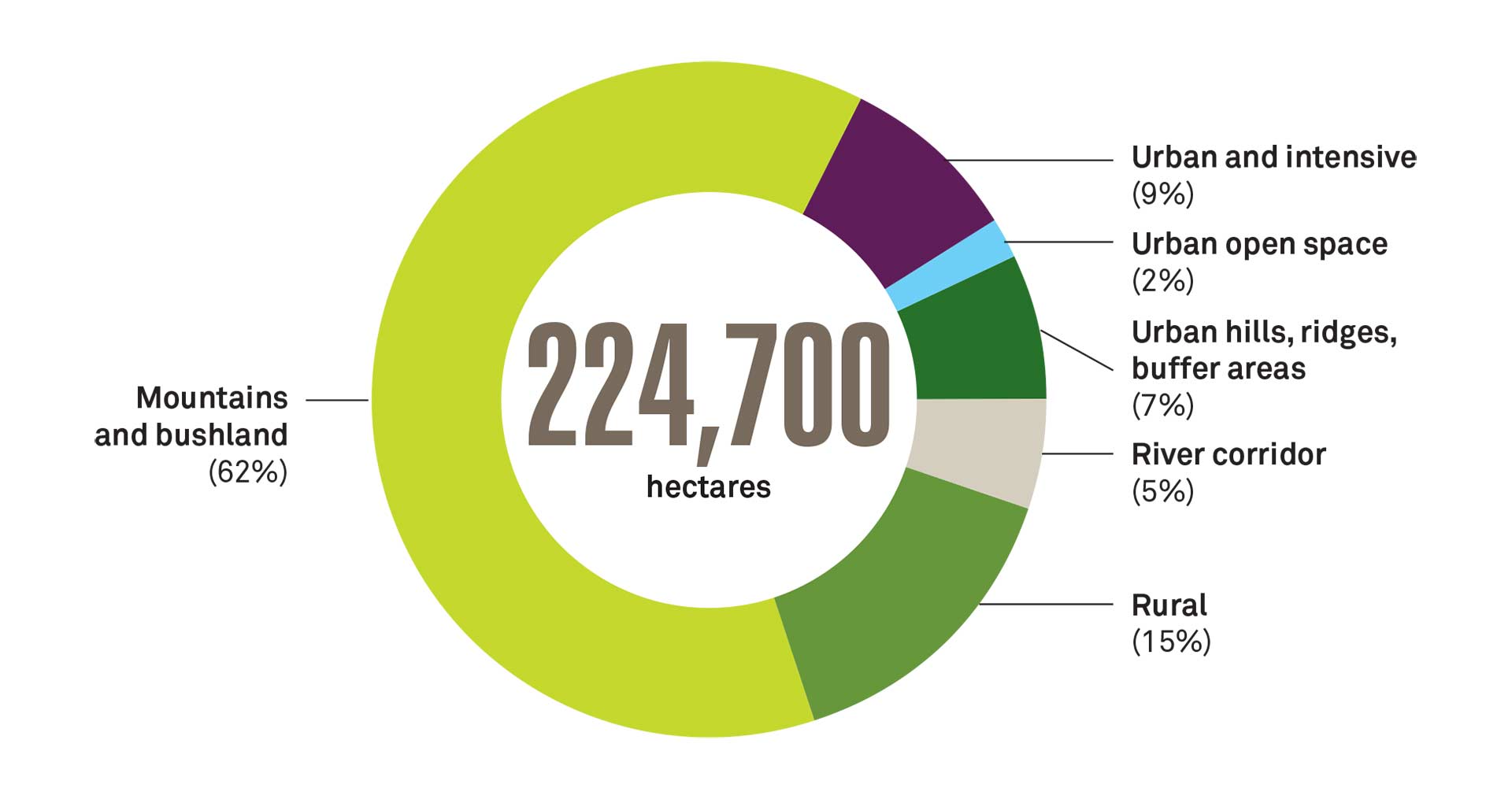What are the main land use findings from the 2019 ACT State of the Environment Report? See the infographic below to find out.
The main pressures on land health in the ACT are:
- vegetation clearing for urban expansion
- agriculture
- fire (see Fire and its impacts section)
- climate change (see Climate is changing section).
Canberra’s land use
The total area of the ACT is around 236,000 hectares, but only 224,700 hectares are managed by the ACT Government. The remainder is national land and largely includes urban areas around central Canberra and Lake Burley Griffin.
For the land managed by the ACT Government, around 75 per cent is nature areas and greenspacePublic parks, gardens, recreational grounds (e.g. sports ova More (areas of park, garden or vegetation kept in urban areas). The remaining 25 per cent is highly modified (or changed from their natural state) landscapes such as urban and agricultural lands.
A lot of the natural and greenspacePublic parks, gardens, recreational grounds (e.g. sports ova More land is considered to be in good health. The amount of land allocated for greenspacePublic parks, gardens, recreational grounds (e.g. sports ova More and for urban use hasn’t changed much in recent years.
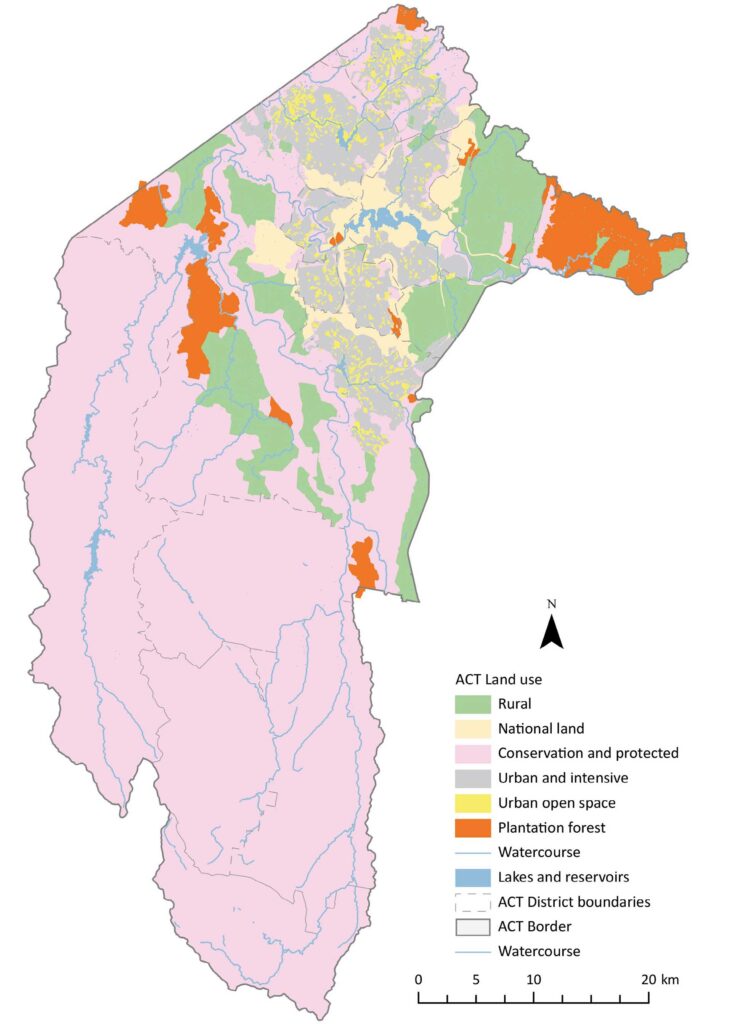
Urban expansion in the ACT
The ACT will need an estimated 100,000 new homes by 2041. Approximately 29,000 new homes are planned for undeveloped land outside of the current urban zone, called greenfield areas.
Before clearing more land for urban development, it’s important to use already cleared zones. Building in empty urban areas is called infill developmentUsing previously developed land as sites for new buildings o More. An example of infill developmentUsing previously developed land as sites for new buildings o More is using an old factory site for new housing.
Canberra’s target is for up to 70 per cent of new housing to be built on infill developmentUsing previously developed land as sites for new buildings o More sites. But urban areas are still growing fast. Between 1991 and 2016, urban areas in the ACT grew by 57 per cent, but population only grew by 43 per cent (see Human settlements and the environment section). If this ratio of urban growth to population continues, the ACT’s current urban footprint would need to increase by a further 46 per cent by 2041 to accommodate growth in population.
Infill developments have a lower environmental impact than greenfield developmentsPreviously undeveloped land used for development. More. Greenfield developmentsPreviously undeveloped land used for development. More require vegetation clearing and can impact on biodiversityThe variety of all life and living processes in the environm More, create erosion and waterway pollution, and provide more opportunity for weeds to spread to natural areas.
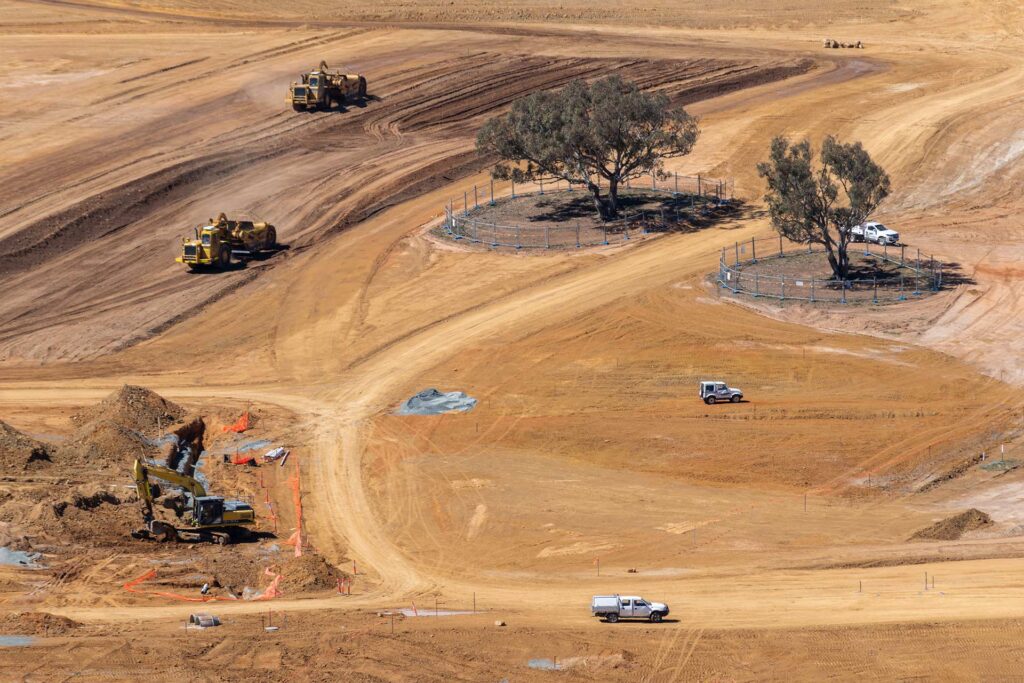
To reduce the impact of greenfield developmentsPreviously undeveloped land used for development. More, scientists and land managers came up with the idea of environmental offsetAn area of land preserved and improved to compensate for the More. An environmental offsetAn area of land preserved and improved to compensate for the More means that developers must preserve or improve similar land elsewhere, to compensate for the land lost to development. Offset land must be similar or greater in size, habitat, species present and level of biodiversityThe variety of all life and living processes in the environm More. Environmental offsetsAn area of land preserved and improved to compensate for the More are important for conserving biodiversityThe variety of all life and living processes in the environm More (see Biodiversity section).
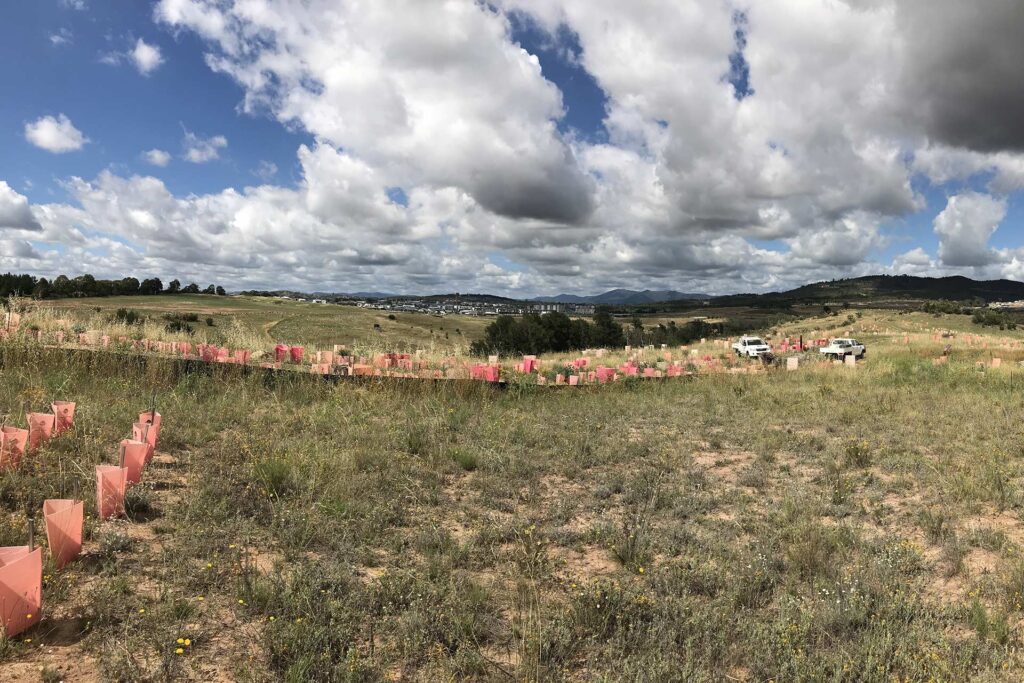
Agriculture and forestry
The ACT’s agriculture industry is relatively small. Beef farms are the most common, making up 40 per cent of farms in the ACT. While land clearing is necessary for farming, the land needs to be cared for so crops and livestock are productive. Farmers need to monitor the level of soil erosion and nutrients. If soil becomes low in nutrients, farmers must buy more fertilisers, which is expensive. Large quantitates of fertiliser can lead to nutrients being washed into local waterways, degrading water quality.
The ACT has 8,700 hectares of pine forest plantations. These areas are harvested for wood once trees mature. In the meantime, Canberrans use these forests for walking, jogging, cycling and other recreational activities.
Urbanisation
Urban areas pose many threats to land and biodiversityThe variety of all life and living processes in the environm More quality, including:
- runoff from roads pollute rivers, lakes and wetlands
- pet cats, which kill 167,000 birds every day in Australia
- urban areas have many weeds which can spread to parks and reserves
- forming urban barriers such as buildings and roads, that restrict animals travelling to breed and hunt.
It’s important to get your hands dirty!
Healthy environments start at the soil. Soil helps break down waste and nutrients, giving these back to the Earth to supply more plants. Soil is home to many tiny creatures and it also stores carbon.
To manage land in the ACT we must understand it. Australia’s Traditional Owners have much knowledge about how to care for the land. There are many Indigenous land management techniques, such as fire management practises, that can influence how we manage the environment today (see Ngunnawal Country section).
We track the health of soil by measuring factors such as erosion, salinity and organic content (living or dead animal and plant material). Soil measurements need to be taken at regular intervals. Measurements over time reveal the health of soil and how long-term and short-term changes affect land. These kind of measurements are currently not undertaken in the ACT, but need to be, to get a better understanding of land health.

